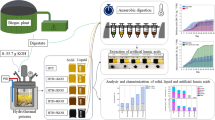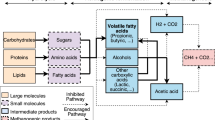Abstract
Crude palm oil (CPO) was physically refined in a 200-kg batch pilot refining plant. A study of the possible role of degumming and bleaching steps in the refining process for a possible critical role in the formation of 3-chloropropane-1,2-diol (3-MCPD) esters was evaluated. For the degumming step, different percentages of phosphoric acid (0.02–0.1%) as well as water degumming (2.0%) were carried out. Six different types of bleaching clays, mainly natural and acid activated clays were used for bleaching process at a fixed dose of 1.0%. Deodorization of the bleached oils was performed at 260 °C for 90 min. Analyses showed that 3-MCPD esters were not detected in the CPO. Phosphoric acid degumming (0.1%) in combination with acid activated clays produced the highest levels (3.89 ppm) of 3-MCPD esters in the refined (RBD) oil. The esters were at the lowest levels (0.25 ppm) when the oil was water degummed and bleached with natural bleaching clays. However, the refined oil qualities were slightly compromised. Good correlation of 0.9759 and 0.9351 was obtained when concentration of the esters was plotted against acidity of the bleaching earths for the respective acid and water degumming processes. The findings revealed the contribution of acidic conditions on the higher formation of 3-MCPD esters. In order to lower the esters formation, it is important to reduce acid dosage based on the crude oil qualities or to find alternatives to acid degumming process. Neutralization of the acidity prior to deodorization was effective in reducing the formation of 3-MCPD esters.



Similar content being viewed by others
References
Gibon V, De Greyt W, Kellens M (2007) Palm oil refining. Eur J Lipid Sci Technol 109:315–335
Čmolík J, Pokorný J (2000) Physical refining of edible oils. Eur J Lipid Sci Technol 102:472–486
Rossi M, Gianazza M, Alamprese C, Stanga F (2001) The effect of bleaching and physical refining on color and minor components of palm oil. J Am Oil Chem Soc 78:1051–1055
Van Hoed V, Depaemelaere G, Vila Ayala J, Santiwattana P, Verhé R, De Greyt W (2006) Influence of chemical refining on the major and minor components of rice bran oil. J Am Oil Chem Soc 83:315–321
Pudel F, Benecke P, Fehling P, Freudenstein A, Matthäus B, Schwaf A (2011) On the necessity of edible oil refining and possible sources of 3-MCPD and glycidyl esters. Eur J Lipid Sci Technol 113:368–373
Hrncirik K, van Duijn G (2011) An initial study on the formation of 3-MCPD esters during oil refining. Eur J Lipid Sci Technol 113:374–379
Zelinková Z, Svejkovská B, Velíšek J, Doležal M (2006) Fatty acid esters of 3-chloropropane 1,2-diol in edible oils. Food Addit Contam 23:1290–1298
Kuhlmann J (2011) Determination of bound 2, 3-epoxy-1-propanol (glycidol) and bound monochloropropanediol (MCPD) in refined oils. Eur J Lipid Sci Technol 113:335–344
Weiβhaar R (2011) Fatty acid esters of 3-MCPD: overview of occurrence and exposure estimates. Eur J Lipid Sci Technol 113:304–308
Franke K, Strijowski U, Fleck G, Pudel F (2009) Influence of chemical refining process and oil type on bound 3-chloro-1,2-propanediol contents in palm oil and rapeseed oil. Food Sci Tech. 42:1751–1754
Weiβhaar R (2008) 3-MCPD-esters in edible fats and oils—a new and worldwide problem. Eur J Lipid Sci Technol 110:671–672
Weiβhaar R, Perz R (2010) Fatty acid esters of glycidol in refined fats and oils. Eur J Lipid Sci Technol 112:158–165
ILSI Europe Report Series: 3-MCPD esters in food products. Summary report of a workshop held in February 2009 in International Life Sciences Institute. Brussels, Belgium
Federal Institute for Risk Assessment: BfR Method_82_FC-008-01 (2009) Determination of 3-MCPD fatty acid esters in edible oils and solid fats by GC–MS—an indirect determination by detection of free 3-MCPD released from 3-MCPD esters by acid hydrolysis and by derivatization with phenylboronic acid. Dahlem, Germany
American Oil Chemists’ Society (AOCS) (1998) Official methods and recommended practices of the American Oil Chemists’ Society, 5th edn. Champaign, Illinois
Malaysian Palm Oil Board (MPOB) Test Method (2005) A compendium of test on palm oil products, palm kernel products, fatty acids, food related products and others. Malaysian Palm Oil Board, Kuala Lumpur
Dijkstra AJ (1998) Degumming revisited. Oleaginuex 5:367–370
Cooperative work of the German Society for Fat Science (DGF) (2001) Bleaching of edible fats and oils. Eur J Lipid Sci Technol 103:505–551
Siew WL, Cheah KY (2007) Optimization of degumming with attapulgite and acid activated clays in refining palm oil. J Oil Palm Research 19:373–380
Frenkel M (1974) Surface acidity of montmorillonites. Clays Clay Miner 22:435–441
Karin Rahn AK, Yaylayan VA (2011) What do we know about the molecular mechanism of 3-MCPD ester formation. Eur J Lipid Sci Technol 113:323–329
Svejkovská B, Novotný O, Divinová V, Réblová Z, Doležal M, Velíšek J (2004) Esters of 3-chloropropane-1,2-diol in foodstuffs. Czech J Food Sci 22:190–196
Doležal M, Chaloupská M, Divinová V, Svejkovská B, Velíšek J (2005) Occurrence of 3-chloropropane-1,2-diol and its esters in coffee. Eur Food Res Technol 221:221–225
Velíšek J, Doležal M, Crews C, Dvorák T (2002) Optical isomers of chloropropanediols: mechanisms of their formation and decomposition in protein hydrolysates. Czech J Food Sci 20:161–170
http://www.poram.org.my. (Accessed Mar. 2011)
Cleenewerck B, Dijkstra AJ (1992) The total degumming process—theory and industrial application in refining and hydrogenation. Fat Sci Technol 94:317–322
Acknowledgments
The research team wishes to sincerely acknowledge the Director-General of MPOB for permission to carry out the work and subsequently published this research effort. Special appreciations are dedicated to the High Oleic Pilot Plant operators, Innovative Products Group and Food Safety Laboratory staff for the operation of the pilot plant and analyses of the samples, respectively.
Author information
Authors and Affiliations
Corresponding author
About this article
Cite this article
Ramli, M.R., Siew, W.L., Ibrahim, N.A. et al. Effects of Degumming and Bleaching on 3-MCPD Esters Formation During Physical Refining. J Am Oil Chem Soc 88, 1839–1844 (2011). https://doi.org/10.1007/s11746-011-1858-0
Received:
Revised:
Accepted:
Published:
Issue Date:
DOI: https://doi.org/10.1007/s11746-011-1858-0




